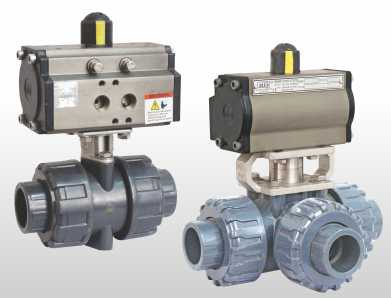We as a whole know very well that valves are utilized for controlling the progression of fluids and gases in various kinds of circumstances. For instance, in our homes, valves that are utilized in gas applications are attachment valves. They are additionally utilized in latrine tanks, on the opposite side. The water nozzles additionally have valves that are utilized externally in the home.
Valves are utilized in various enterprises as well as in homes. Various valves offer different usefulness, porting, life span, control, and type abilities. Here, we will talk about the examination of plug valves and ball valves exhaustively.
Nonetheless, remember that both the attachment valves and ball valves show a similar capability. Both are utilized in controlling the progression of gas or fluid either in a basic capability or as a multipath capability.
What are plug valves?
In a fitting valve, the liquid is halted or begun through rotational development. The circle has a fitting shape, which is where its name comes from. Embedded in the valve body is a removable fitting of a round and hollow or tightened shape. A calculated entry is framed at the right point to the longitudinal hub of the fitting.
Opening the attachment valve permits the bay and outlet ports of the valve to agree with the entry in the fitting. At the point when it is diverted to 90 degrees from the vacant position, liquid can’t move through the opening due to the strong aspect of the fitting.
Availability of plug valves
Plug valves are generally accessible either in the greased-up structure or in the non-greased-up plan. Most shockingly, it is likewise accessible in different port openings to the attachment and different fitting plans. One-piece top-section plug valves share a lot of qualities with one-piece top-passage ball valves. Because of their likenesses, ball valves and attachment valves are very much like sorts of valves.
The structure of plug valves is simple.
Plug valves are exceptionally straightforward sorts of valves that are basic in structure and more modest in size. By turning the fitting valve at a 90-degree point, you can undoubtedly open the valve. Remember that plug valves are normally utilized in low-temperature conditions as well as low-pressure conditions.
They for the most part have more modest distances across to use in any circumstance. Sadly, the fixing surface of the fitting valve is not difficult to wear where you can build its life span by treating the attachment valve astutely. This is the principal reason it is handily caught in high-strain and high-temperature conditions, which are not appropriate for stream managing.
What are ball valves?
With great shutoff capacities, closing off a ball valve is conceivable. Opening or shutting the valve is achieved by turning the valve 90°. The valve can work all the more rapidly by using this component, and spillage will be decreased because of organ seal wear.
Aira Euro Automation is the leading UPVC ball valve manufacturers in India. We offer various industrial valves like ball valves, butterfly valves, control valves, plug valves, and many more.

Ball valves can be sorted into two primary sorts:
Full bore
In all-out valves, the size of the valve opening is equivalent to the measurement of the funneling.
Reduced bore
The measurement of the line and valve opening is more modest in decreased bore valves.
Recall that various manufacturers and organizations generally incline toward the pedal to the metal ball valves since they normally limit the strain drop across the valve.
Closed or fully open position
By and large, ball valves are utilized in either a completely open or completely shut position.
Keeping them somewhat open doesn’t permit them to direct stream. This is because the ball valves depend on delicate valve seats formed like a ring.
The explanation is that when we use ball valves in a somewhat vacant position, the strain is simply applied to the piece of the valve seat, which can cause distortion. Sadly, the fixing properties are disabled on the off chance that the valve seat misshapes. Eventually, the ball valve will spill accordingly.
Less expensive and low maintenance cost
Be that as it may, ball valves are great in the feeling of being more affordable than any valve setup and have low support costs. A fast turn on/off and no oil are expected to make these ball valves the most reduced valves that anyone could hope to find. Additionally, the ball valves offer tight fixing with low force.
The choking attributes of regular ball valves are poor. As a result of the high-speed stream impinging on the seat, the uncovered piece quickly disintegrates.
Evolve from the plug valve
Ball valves generally develop from the fitting valve with a ball as its end parts. Predominantly we can utilize ball valves to cut off or adjust the stream course of the medium. There is almost no opposition in the stream way through the medium because the valve pit is level.
Principally the ball valves are minimized in structure, simple to work, and simple to keep up with. Ball valves are in this manner utilized in various sorts of mediums like dissolvable, water, corrosive, petroleum gas, and different media.
Most shockingly, ball valves are likewise utilized in brutal media, for example, hydrogen peroxide, methane, ethylene, or oxygen. The ball valve is by and large indicated for direct opening and shutting, however, ongoing improvements have prompted the plan of ball valves with the capacity to choke and control stream.
Why are plug valves better than ball valves?
There are many justifications for why plug valves are superior to ball valves.
As a matter of some importance, the fitting valve can’t supplant the ball valve, while the ball valve can supplant the attachment valve.
Utilizing the fitting valves than the ball valves is simpler. On the opposite side, there is a space between the body and the ball. Notwithstanding, the ball valve has a few disadvantages.
